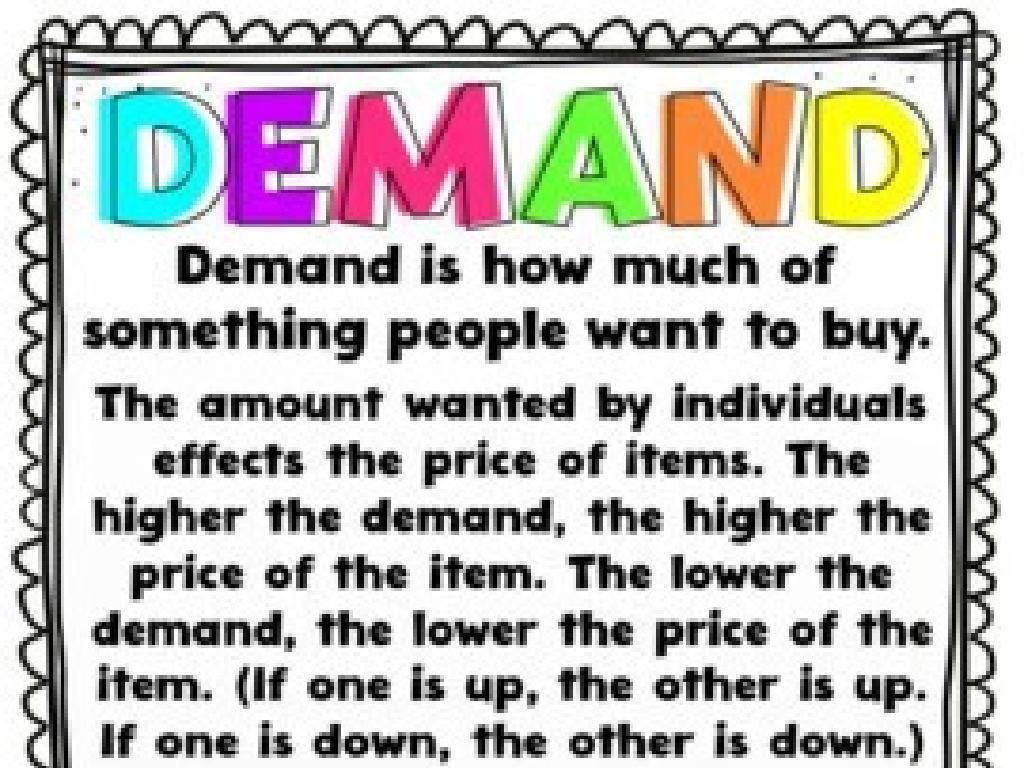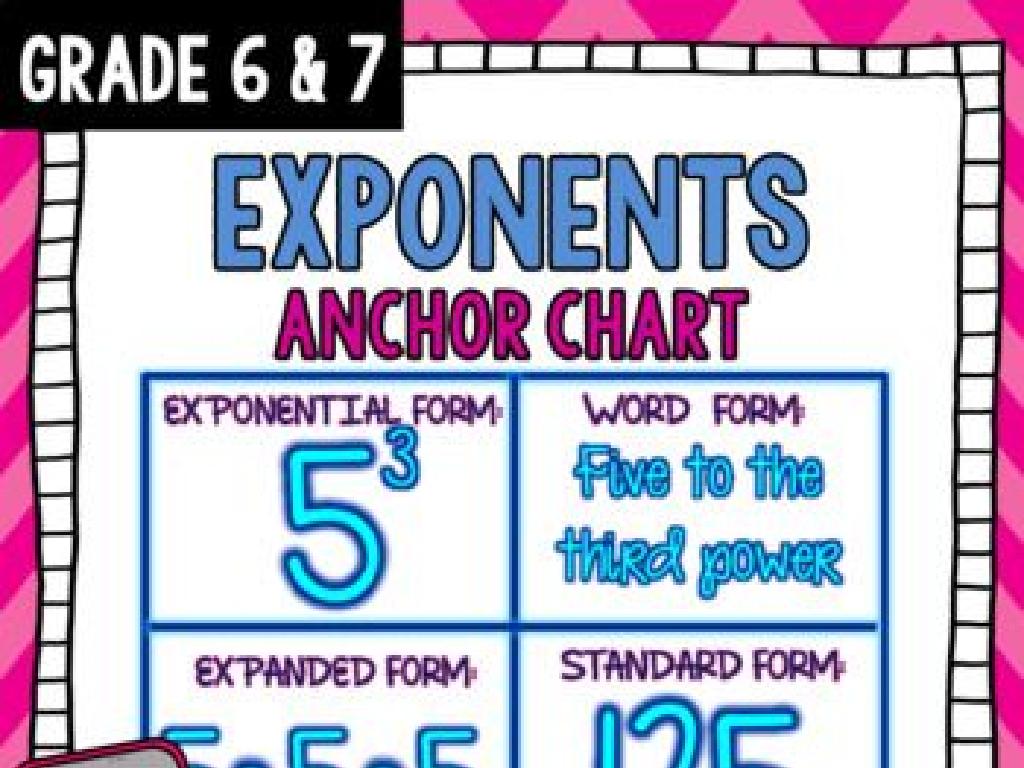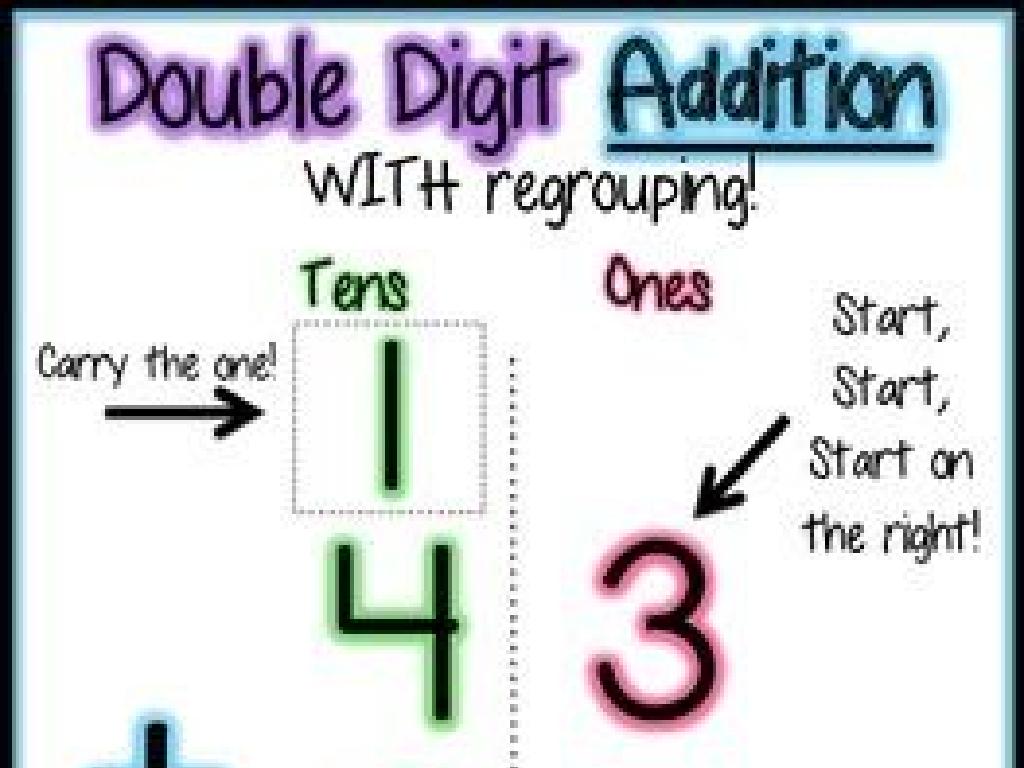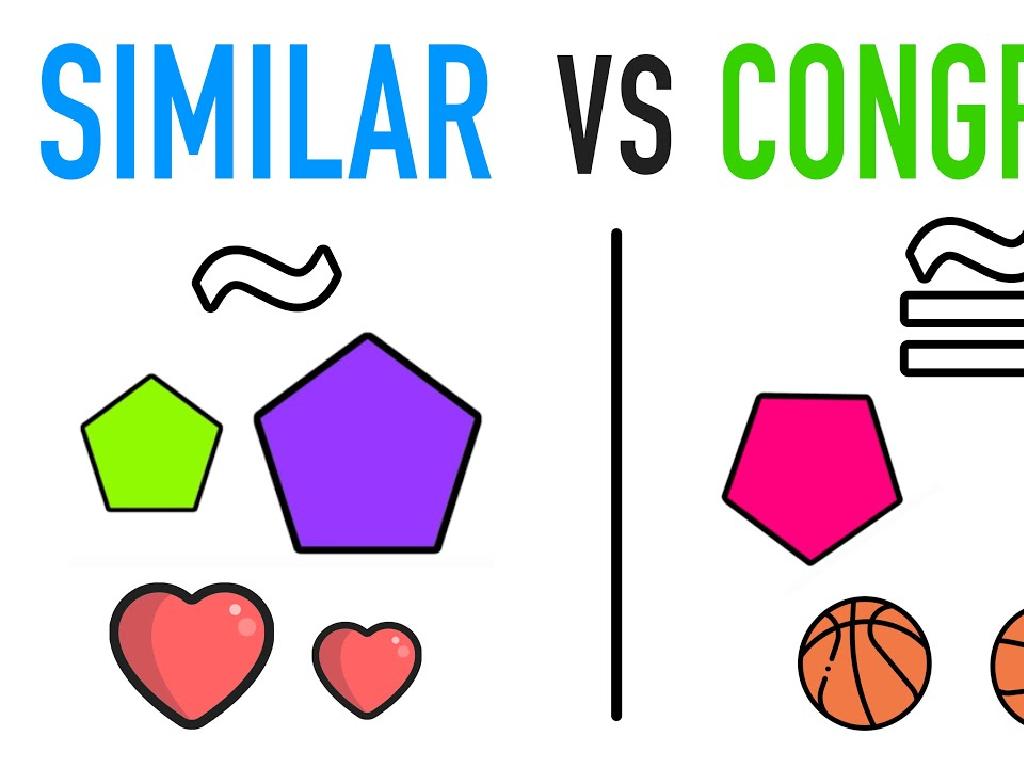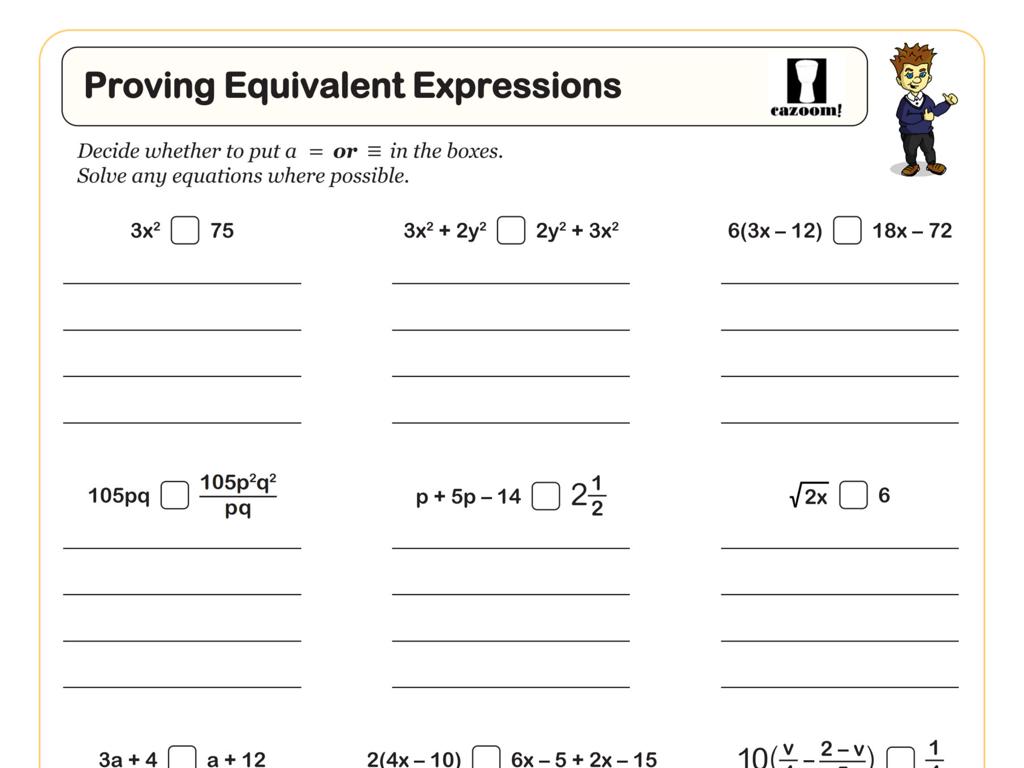Convert Decimals To Mixed Numbers
Subject: Math
Grade: Fifth grade
Topic: Convert Between Decimals And Fractions
Please LOG IN to download the presentation. Access is available to registered users only.
View More Content
Converting Decimals to Mixed Numbers
– Understand decimals and fractions
– Decimals represent parts of a whole, like 0.75 is 75% of 1.
– Decimals & fractions in daily life
– Money uses decimals, like $2.50, and cooking often uses fractions, like 1/2 cup.
– Today’s goal: conversion
– Learn to change decimals like 1.25 into mixed numbers, like 1 1/4.
– Steps to convert decimals
– Separate the whole number and fraction, then simplify the fraction part.
|
This slide introduces the concept of converting decimals to mixed numbers, a key skill in fifth-grade math. Start by ensuring students understand what decimals and fractions represent and how they are used in everyday situations, such as money and cooking measurements. The goal of today’s lesson is to learn the conversion process. Teach students to first identify the whole number in the decimal and then convert the decimal part into a fraction, which may require simplifying. Use examples like 1.25, where 1 is the whole number and .25 is equivalent to 1/4, to demonstrate the conversion. Encourage students to practice with different decimals to gain confidence in this skill.
Understanding Decimals
– Decimals represent non-whole numbers
– Like 0.5 is half, not a whole number
– Decimals are part of the base-10 system
– Each decimal place is a power of 10
– Everyday examples of decimals
– Money uses decimals: $1.25, measurements: 2.5 inches
– Converting decimals to mixed numbers
– Mixed numbers combine whole numbers with fractions
|
This slide introduces the concept of decimals to the students. Begin by explaining that decimals are used to represent numbers that are not whole, such as parts or fractions of something. Emphasize that our number system is based on the number 10, which is why we use decimals to show values less than one. Provide relatable examples such as money and measurements to illustrate how decimals appear in everyday life. Finally, explain that decimals can be converted to mixed numbers, which is a combination of a whole number and a fraction, to provide another way of looking at these quantities. This will set the stage for learning how to perform these conversions.
Understanding Mixed Numbers
– Define a mixed number
– A whole number plus a fraction, like 2 3/4
– Parts of a mixed number
– Consists of a whole number and a fraction part
– Mixed numbers in daily life
– Used in cooking, measuring, and time tracking
– Practice converting decimals
|
Introduce the concept of mixed numbers to the students by defining what a mixed number is and showing examples, such as 2 3/4. Explain that a mixed number has two parts: a whole number and a fraction. Discuss where mixed numbers are commonly used in everyday life, such as in recipes for cooking (1 1/2 cups of sugar), measurements (3 1/4 inches), and time (2 1/2 hours). After the conceptual understanding, guide students through the process of converting decimals to mixed numbers with step-by-step examples. Provide practice problems for students to try on their own, ensuring they grasp the conversion method.
Converting Decimals to Mixed Numbers
– Identify whole and decimal parts
– Separate the number at the decimal point
– Convert decimal to fraction
– Use place value for the fraction part
– Combine whole number and fraction
– Write them together as a mixed number
|
This slide introduces the process of converting decimals to mixed numbers, a key concept in understanding the relationship between decimals and fractions. Start by explaining that a mixed number consists of a whole number and a fraction. Demonstrate how to identify the whole number part to the left of the decimal and the decimal part to the right. Then, show how to convert the decimal part into a fraction by considering its place value (tenths, hundredths, etc.). Finally, combine the whole number with the newly converted fraction to form a mixed number. Provide examples such as converting 3.25 to 3 1/4, emphasizing the steps and the use of place value. Encourage students to practice with different decimals to gain confidence in this skill.
Converting Decimals to Mixed Numbers
– Identify the whole number part
– For 3.75, the whole number is 3
– Convert decimal to a fraction
– .75 is 75/100, which simplifies to 3/4
– Simplify the fraction if needed
– Combine whole number and fraction
– The mixed number is 3 3/4
|
This slide is aimed at teaching students the process of converting decimals to mixed numbers. Start by identifying the whole number part of the decimal, which is the number to the left of the decimal point. Next, convert the decimal part to a fraction by considering it as a number over 100 or 1000, depending on the number of decimal places. Then, simplify the fraction to its lowest terms. Finally, combine the whole number and the simplified fraction to form the mixed number. Use the example of 3.75 to illustrate the process: the whole number is 3, and the decimal .75 converts to 75/100, which simplifies to 3/4, resulting in the mixed number 3 3/4. Encourage students to practice with additional examples and ensure they understand each step.
Practice Time: Converting Decimals to Mixed Numbers
– Convert 2.5 to a mixed number
– 2.5 equals 2 and 1/2
– Now change 4.2 to a mixed number
– 4.2 equals 4 and 1/5
– Discuss your methods and answers
– Share your results with the class
|
This slide is designed for a practice activity where students apply their knowledge of converting decimals to mixed numbers. Start by demonstrating how to convert 2.5 into a mixed number, which is 2 and 1/2. Then, ask the students to try converting 4.2 into a mixed number on their own, which is 4 and 1/5. Encourage them to discuss the steps they took to arrive at their answers and to explain their reasoning. Finally, have the students share their results with the class to foster a collaborative learning environment. This activity will help solidify their understanding of the conversion process and give them confidence in their skills. Provide guidance and support as needed and praise their efforts to build a positive learning experience.
Class Activity: Decimal Conversion Challenge
– Pair up for conversion fun
– Convert decimals to mixed numbers
– Example: Change 3.75 to a mixed number
– Follow our learned steps
– Remember to divide the decimal part by 1/100
– Class review of solutions
|
This activity is designed to reinforce the students’ understanding of converting decimals to mixed numbers. Have the students work in pairs to encourage collaboration. Provide a list of decimals for each pair to convert using the steps taught in the lesson. These steps include separating the whole number from the decimal part and then converting the decimal to a fraction. After the activity, bring the class together to review the answers, ensuring to discuss any common mistakes or misconceptions. This will help solidify their learning and give them confidence in their ability to tackle decimal to mixed number conversions.
Wrapping Up: Decimals to Mixed Numbers
– Congratulations on learning conversions!
– Homework: Decimal Conversion Worksheet
– Complete the worksheet to practice converting decimals to mixed numbers.
– Share your learnings next class
– Be prepared to discuss the problems you solved.
– Practice makes perfect
– The more you practice, the better you’ll understand.
|
This slide serves as a conclusion to the lesson on converting decimals to mixed numbers. It’s designed to congratulate the students on their hard work and to assign them a worksheet for further practice. The homework will reinforce the concepts learned in class and help solidify the students’ understanding. In the next class, students will have the opportunity to share their answers and discuss any challenges they faced. This will not only help them learn from each other but also give them a chance to articulate their thought process, which is crucial for deeper understanding. Encourage the students to try their best and remind them that making mistakes is a part of learning.

